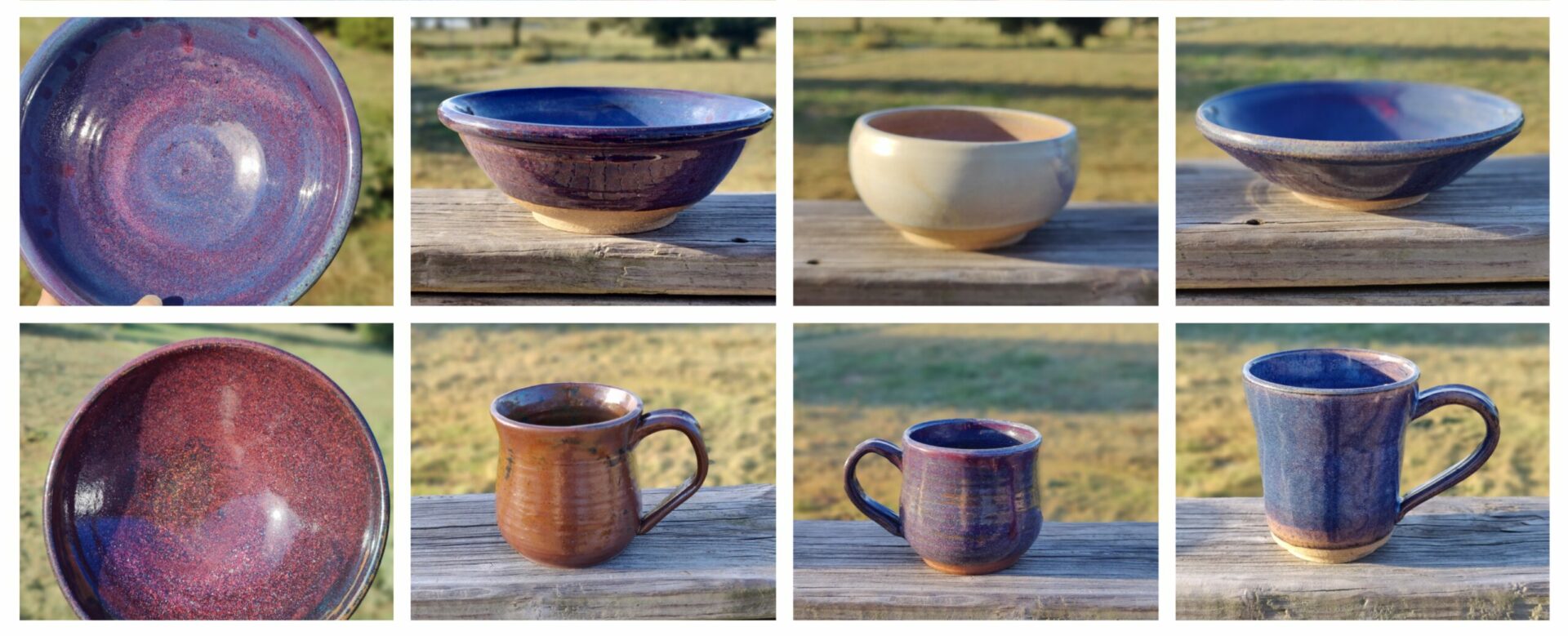Mugs!
Check out these beauties! From earthy neutrals to rich blacks and stunning blues, each mug is handcrafted with love from hand dug McCurtain County clay (70% local). Perfect for your morning coffee or tea. Which …

Check out these beauties! From earthy neutrals to rich blacks and stunning blues, each mug is handcrafted with love from hand dug McCurtain County clay (70% local). Perfect for your morning coffee or tea. Which …
Some of you may remember me posting about a huge water trough full of clay I got when we did the foundation for our shop. I’ve used this clay for years by processing out more …
Adding 5% EPK to the bucket of the black tub clay that already had 22% neph sye added did indeed jump the absorption from 1.5% to over 3%. The test tile was less shiny after …
Yesterday, I completed a cone 6 firing with mixed results. The clay from the big tub, which tested at 1.5% absorption but looked shiny, slumped badly. I had been afraid of that. I conducted a …
These pieces were made with a local clay body that I failed to properly absorption test before I jump to making. They’ve been in my kiln for a while. I just left them as mixed …
Well, my last tests did not go well. One test bar (the sandy one with 16% absorption without anything added) was way over fired at 30% neph sye. It still had 11% absorption at cone …
I know it probably seems like I haven’t been working because I haven’t been posting. I have been working—it’s just the boring behind-the-scenes stuff. Since the disaster in April, where my clay got contaminated, I’ve …
The one marked RC is my reclaim. It’s a mix of commercial and local materials. I have no idea of the percentage of each, as it all gets mixed together. Absorption at cone 7 is …
After trying working with my deep red clay at cone 9/10, I am moving back to cone 6. At least for the time being. I knew when I moved to cone 9/10 that I might …
This is the batch I dug a few days ago and processed half of it to see if I can recreate the accidental perfect batch. I posted a few days ago. I kept it a …